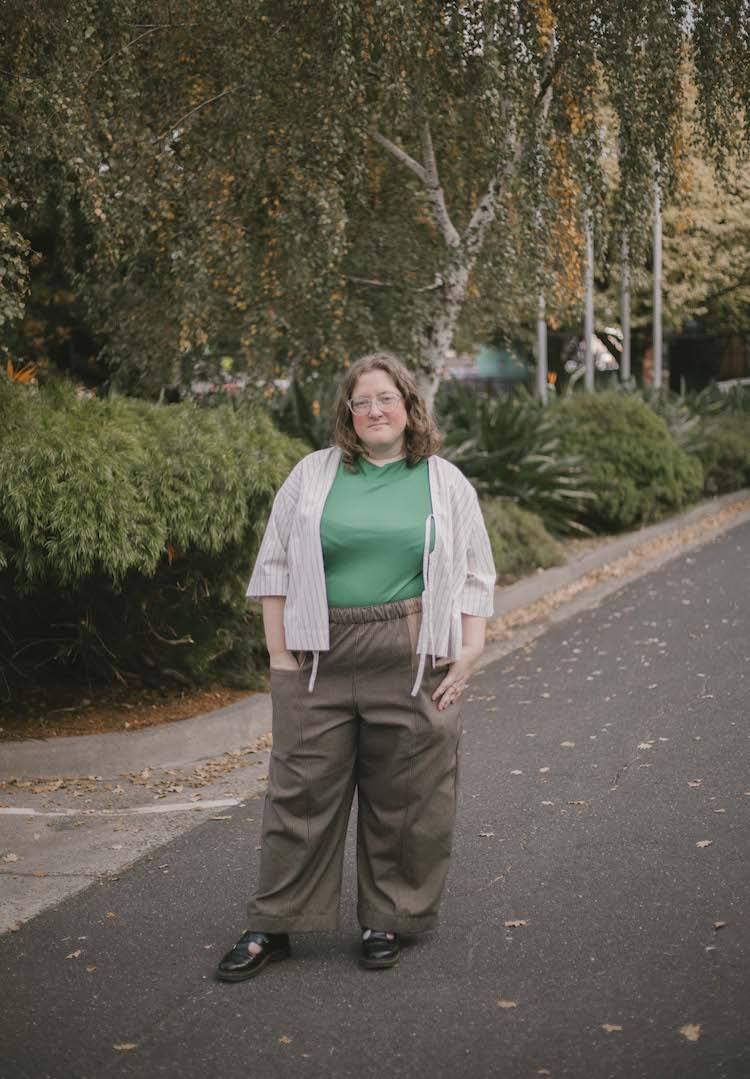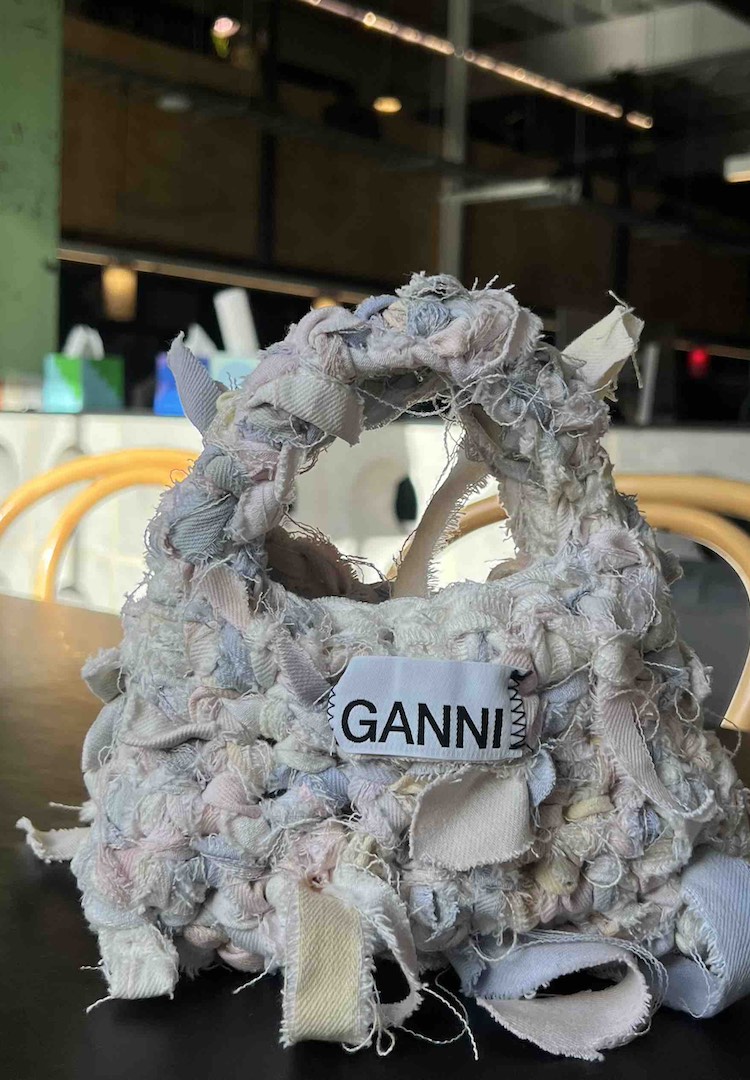A fashion sustainability lecturer on five ways to lessen your wardrobe’s impact
WORDS BY KATIE GASTON
“It’s not your fault that it’s hard to find out information, that’s what the industry does on purpose.”
Between the pressures of microtrends, the obscene affordability of fast fashion and confusing greenwashing traps, it’s easy to feel a little lost when it comes to establishing a sustainable wardrobe.
It’s hard to find the time to trawl through the endless amounts of online and offline information that can teach you how to shop and dress more consciously. Dr Harriette Richards, a Fashion Enterprise Lecturer at RMIT and an expert in sustainable and ethical fashion practices, is well-versed in the complexities of the fashion industry.
Looking for more fashion news and features? Head to our Fashion section.
At this year’s PayPal Melbourne Fashion Festival, she’s hosting the Fashion Talk: Sustainability Update panel, a conversation on sustainable sourcing and the use of materials in the fashion industry.
As we’re an official media partner of PayPal Melbourne Fashion Festival, I was able to pick Harriette’s brains on what we should be doing more (and less) to prioritise sustainability throughout our wardrobe cycle.
She talked me through the three primary phases of interactions between us and our clothes – point of purchase, use and discard – and how we can introduce more environmentally-conscious practices into each of these phases.
Whether your biggest sustainability hurdles are budget constraints, trend cycles or finding new staple brands to replace your current problematic faves, here are some simple but effective tips that you can start right now to up your fashion sustainability game.
Consume less
It doesn’t exactly take a rocket scientist (or a fashion lecturer) to notice that, as Harriette puts it, “Australian consumers still love consuming”. With the exponential rise in fast fashion and micro trends, we’re pressured to consume more instead of wearing the garments already in our wardrobes.
Harriette says this overconsumption leads to “producing so much clothing” which ultimately ends up in landfill. “… In the phrase ‘reduce, reuse, recycle’ we often jump to that last point of recycling, without thinking so much about the first two – reduce and then reuse,” she explains.
She emphasises that “sustainable consumption practices really mean cutting back” on purchasing new items and that we should be “wearing our garments much more than we currently do in Australia”.
Buy sustainable materials
Opting for clothing that’s made out of sustainable materials might seem obvious, but many of us just don’t know enough about the merits of different fabrics or fibres, which makes it hard to make an informed decision.
“[We should be] thinking more critically about what our garments are made from”, prioritising buying natural fibres like linen, cotton, wool and hemp where we can, because it “links into what’s going to happen to [our clothes] when we no longer wear them,” she tells me.
Harriette also notes that “it is sometimes hard to buy things without [synthetic fabrics] especially socks, underwear… or activewear”, particularly when buying clothing that needs a little more stretch to it.
Try your best to avoid synthetic fabrics such as rayon, nylon and especially polyester, which is “a no-go zone” for Harriette. Instead, opt for quality clothing made from natural fibres and fabrics materials when purchasing new wardrobe items.
Wash your clothes less
Harriette tells me “we can think a little bit more about… the environmental impact of the wash cycle… things don’t need to be washed as much as we think they do”.
I was a little apprehensive about this one, but she assures me that washing consciously (which means washing less or hand washing) does not directly translate to an increase in stinkiness.
When coupled with the previous suggestion of opting for natural fibres, which are far more breathable and won’t cling on to sweat as much, less washing is a simple way to increase the life cycle of your garment. As an added bonus, you’ll also be decreasing your electricity and water usage while you’re at it.
And in the instances where pesky synthetic fabrics are unavoidable, Harriette recommends popping them in a wash bag from Guppyfriend during their spin in the washing machine. These bags catch microplastics before they have a chance to leach into the waterways, reducing the negative impact of synthetic garments.
Learn basic mending techniques
This may sound like a significant commitment to some, but rest assured, “learning those mending techniques” as Harriette recommends doesn’t mean you have to become a world-class seamstress or tailor overnight.
Any basic tears or loose buttons can usually be fixed at home with a quick Google and some basic sewing supplies. But for anything bigger, there’s no shame in looking up local clothes mending and alterations businesses or asking around in your neighbourhood or friendship groups to see if someone you know is handy with a sewing machine or needle and thread.
Harriette says developing or outsourcing these skills will keep you wearing the items you love and will help the earth by making sure “your garments can stay in that use cycle for much longer”.
Consciously rehome your old garments
Harriette urges us to really “think about what you’re going to do with your garments at the end of their life”. Sure, you can pop them in your local op shop bin but, as we should all know by now, if we’re mindlessly dropping off mountains of garments, they’ll likely end up in an overseas landfill.
If you’re already following Harriette’s other tips and tricks, your garments should be built for longevity and well cared for. In that case, they’ll be able to be passed through several other people’s wardrobes after leaving yours.
She tells me that one of the best ways to “get them back in the use cycle… [and] going to someone who wants [them]”, is to drop them at your local consignment store or sell them yourself online or at a market.
If this feels like too much effort, you can still donate. To “improve the chances that it’s actually going to be used” Harriette suggests finding specialised, local organisations for your different styles or types of clothes.
That way you’ll know that wherever you’re taking your donations are experts in rehoming or recycling your garments. Some good starting points are Groomed to Go, which gives professional and casual clothes to job-seeking or newly employed people in need, SCR Group, which takes clothes that can’t be reused and turns them into rags or converts them into alternative fuel and Support the Girls, an organisation that gives your old (but still usable) bras to women in need.
Many of these organisations have limited funds so any unusable garments will be heading to landfill if you haven’t done the research on what they can and can’t accept before you drop off your donations.
It may seem obvious to some, but washing and repairing your garments pre-donation to make sure they end up being reused or recycled is a must. As Harriette points out, “If you’re not going to wear it because of the state that it’s in, no one else will either”.
To hear more from Harriette about sustainability in the fashion industry, check out the Fashion Talk: Sustainability Update event at PayPal Melbourne Fashion Festival here.













